Erik the Red finds Greenland—Christianity Introduced—Biarne Heriulfson sees Strange Lands—Leif Erikson, the Discoverer of America—The new Country is called Vinland—Subsequent Journeys to Vinland—Thorfin Karlsefne
DURING the reign of Earl Haakon a man from Jæderen, called Erik the Red, being obliged to leave Norway because he had killed a man, proceeded to the western part of Iceland. Here he committed a similar offence and was condemned at Thorsnes Thing to banishment. He had heard that a man called Gunbiorn, son of Ulf Krage, had some time ago been driven by the storm far westward and had seen a great country. Erik the Red fitted out a vessel and told his friends that he intended to find the country Gunbiorn had seen. He took with him a man by the name of Heriulf Bardson. They found the country (984), and on a visit later to Iceland Erik the Red gave such a fine description of the new country that it was called Greenland. A number of colonists returned with him to the new country, and the foundation of several settlements were laid. In the summer of 999 Leif Erikson, a son of Erik the Red, made a visit to Norway, and as he met King Olaf Trygvason he adopted Christianity, and passed the winter with the king. In the following spring King Olaf sent Leif Erikson, together with a priest and other teachers, to Greenland to proclaim Christianity there. Flourishing colonies, with churches, monasteries, and bishoprics, are known to have been maintained in Greenland until the end of the fourteenth century.
Biarne Heriulfson, a son of the above-named Heriulf Bardson, while sailing westward from Iceland in search of his father, met with stormy weather, northerly winds and fogs, and was driven out of his course. As he came to different shores, which, from the description he had received, could not be those of Greenland, he turned around, and, sailing in a northeasterly direction, finally arrived at his father’s home in Greenland. When telling of his discovery he was much ridiculed for not having landed and examined the new countries. Leif Erikson bought Biarne’s ship, and with a crew of thirty-five men set out, in the year 1000, to look for these lands. He came first to a land on his right as he sailed southward. It had great icy mountains in the interior and a shore of flat stones. He therefore named the country Helluland (from the Norse helle, a flat stone). He continued his course southward, and came to another country, which was level and covered with woods and had a low coast. He called this country Markland (outfield or woodland). The antiquaries consider Helluland to have been Newfoundland, and Markland some part of Nova Scotia. Leif and his party put to sea again with a northeast wind, and after two days’ sailing made land, and came to an island lying on the north side of the mainland. They entered the channel between the island and a point projecting northeast from the mainland, and at last landed at a place where a river which came from a lake fell into the sea. They found the country very agreeable, and, resolving to winter there, erected some houses. Leif divided his people into two parties, to be employed in turns in exploring the country and working about the houses. One evening it happened that one of the exploring party, a German by birth, named Tyrker, was missing. They went out to search for him, and when they met him he told them he had been up the country, and had discovered vines and grapes, a fruit with which he was acquainted from his native country. They now occupied themselves in gathering grapes and cutting vines, and felling timber with which they loaded the vessel. Leif called the country Vinland. Toward spring they made ready and sailed away, and returned to Greenland.
In the year 1002 Leif Erikson’s brother, Thorvald, fitted out a ship and sailed southward with thirty men, after consulting with Leif. They came to Vinland, to the houses put up by Leif, where they remained quietly all winter, and lived by fishing. In the spring Thorvald sent a party in the long-boat to explore the country to the south. They found the country beautiful and well wooded, but with little space between the woods and the sea, and the strand full of white sand. There were also many islands, and shallow water. They came back in the autumn to Leif’s houses. The following spring Thorvald sailed with his vessel eastward, then northward along the land. Outside of a cape they met bad weather and were driven ashore and broke their keel. They remained there a long time to repair their vessel. Thorvald said to his men: “We will stick up the keel here upon the ness and call the place Keelness.”3 Then they sailed eastward along the country and landed on a headland, which Thorvald liked so well that he said he would like to make his home there. On going on board they saw three little hills on the sandy shore. They went up to them and found they were three canoes, made of skin, with three natives—or Skrælings, as the Northmen called them—under each canoe. They killed eight of them, while one made his escape in his canoe. Afterward a great number of the natives attacked Thorvald’s party. They were repulsed, but Thorvald was wounded by an arrow and died. He was buried on the headland which he had said he liked so well. His men remained there during the winter, and in the spring returned to Greenland.
In the summer of 1006, an Icelander by the name of Thorfin Karlsefne came to Greenland, and, in the winter, married Gudrid, the widow of Thorstein, third brother of Leif Erikson. By her advice he resolved to undertake an expedition to Vinland and establish a colony there. In the spring (1007) they set out with three ships, 160 men, and all kinds of live stock, and sailed to Vinland. Some time after their arrival there Gudrid bore a son, who was named Snorre. The colonists occasionally traded with the Skrælings, giving them pieces of cloth and dairy products for their skins; but when they refused to sell them weapons, the Skrælings became hostile to the settlers and attacked them repeatedly. These constant hostilities so disheartened the settlers that they resolved to leave the country, and, after three years’ sojourn in Vinland, Thorfin Karlsefne and his party returned to Greenland. Another expedition to Vinland was undertaken, shortly after their return, by Freydis, the illegitimate daughter of Erik the Red, her husband Thorvald, and two Norwegians named Helge and Finboge. This party quarrelled among themselves, and Freydis, who is described as a very bad woman, caused a great number of them to be murdered. The survivors returned to Greenland in the spring of 1013. The next summer, Thorfin Karlsefne went to Norway with his Vinland cargo and sold it to great advantage. He returned to Iceland and bought land there, and, according to the saga, many men of distinction are descended from him and his son Snorre, who was born in Vinland.
Author: Sigvart Sörensen


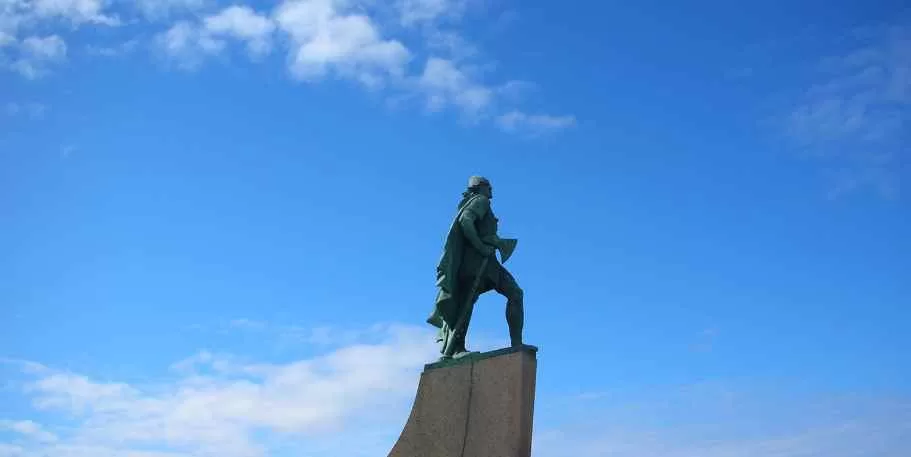

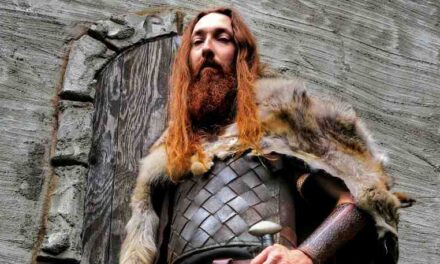
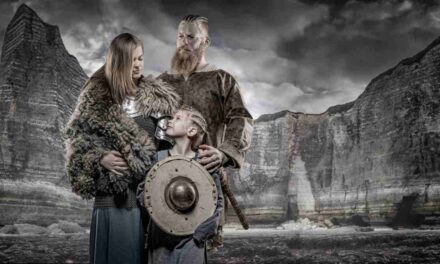





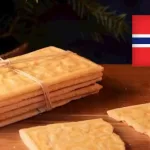
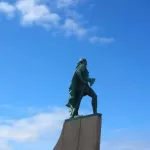
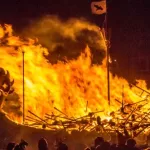

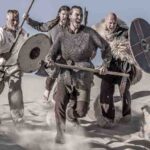
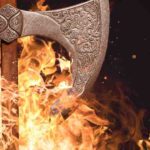
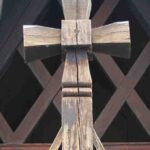

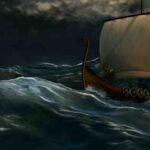
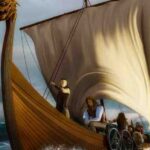
Trackbacks/Pingbacks